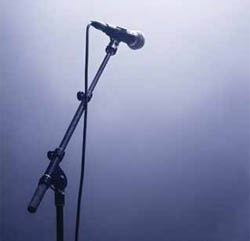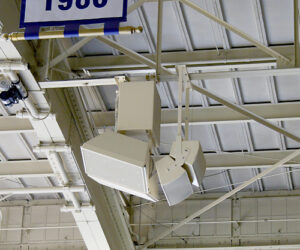Microphones come in a wide variety of shapes and sizes, but many of us typically categorize them in two basic groups: vocals and instruments. And the truth is that many models can excel at either task.
Take the ubiquitous Shure SM57. It’s a “go-to” instrument mic found in almost every live and studio mic kit yet it also handles vocals and speech quite well. Ever see the podium for the president of the United States? It’s long incorporated a pair of SM57s in a VIP dual holder, so every presidential administration since Lyndon B. Johnson has deployed an (gasp) instrument mic for voice. (Or maybe the rest of us have been using a podium mic on snares, toms and guitar amps for decades…)
Multipurpose models may also have switches to adjust the response for specific uses. A low-cut or “roll-off” switch is a popular feature that can help reduce bass frequencies. Other models offer switches that further tailor the response for a particular instrument, such as kick drum.
Mics that are optimized for a particular application are also great to have in the kit. They can really shine in helping to fully and more accurately capture a specific sound. For example, a large-diaphragm, bulky mic with a built-in stand mount designed for kick drum will probably be a better choice in that role than a general purpose model.
Dynamics and condensers are by far the most popular types for live applications. Dynamics work on the principle of electromagnetic induction, similar to loudspeakers but in reverse. Because the diaphragm is physically attached to a voice coil, it may not be quite as responsive with higher pitched and softer sounds, but dynamics offer plenty of pick-up for vocals and instruments, along with the requisite ruggedness.
Condensers have gained in popularity in the live world, with many newer models robust enough to withstand abuse. The diaphragm, which can be lighter and thinner in comparison to a dynamic, is not connected to a coil mass. It responds to transients and higher frequencies very well, but a power source (phantom power or batteries) is needed. Ribbons suspend a very thin aluminum diaphragm between two strong magnets.
The vast majority of vocal and instrument mics are unidirectional, with pickup patterns including cardioid, supercardioid and hypercardioid. In general, they reject sounds from directions other than the front (at various degrees), and this is highly desirable given all of the noise on a typical stage as well as from the house.
Cardioids are more forgiving to a singer’s technique and the angle at which the mic is addressed. Supercardioids are more focused to favor sounds from the front and have greater attenuation at their sides – about 10 dB – exhibiting minimum sensitivity 140 to 150 degrees off-axis, with a minor secondary response lobe at their rear. Hypercardioids are even slightly more focused and distinguished by minimum response 110 to 120 degrees off-axis at the expense of a slightly larger rear lobe.
What the sensitivity rating tells us is the loudness of the mic’s output. The lower the negative dB number, the louder the output. For very soft instruments, choosing a mic that has a louder output may keep you from having to crank up the preamp and raising the noise floor on that channel.
The best advice is to trust your ears over anything else. Also work with positioning because any mic’s location in relation to the sound source can be a critical factor in how it sounds. Enjoy this Real World Gear look at recent dynamic and condenser models of many types for vocal and instrument applications. Our list is by no means all-inclusive but can serve as a starting point for your own investigation.
Senior contributing editor Craig Leerman is the owner of Tech Works, a production company based in Las Vegas.
















